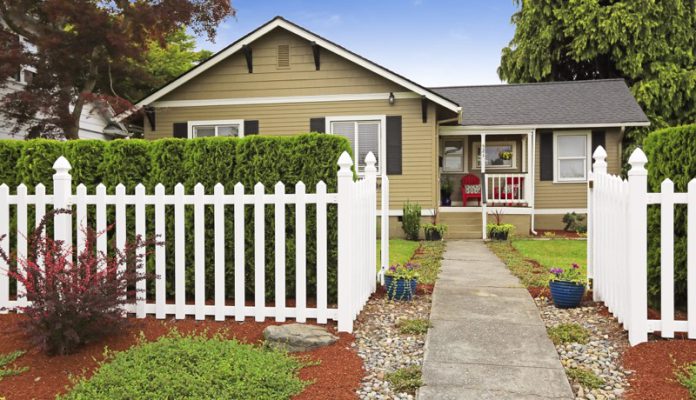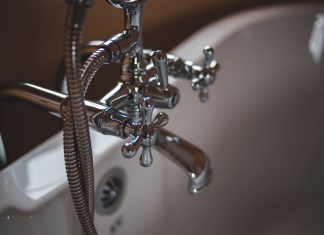Learn how to keep your fence looking great and functioning properly with these essential tips for fence maintenance after installation.
Tips for Maintaining Your Fence After Installation
A well-maintained fence not only adds beauty and security to your property but also increases its value. Proper care and attention are necessary to ensure the longevity and durability of your fence. In this article, we will explore various tips and suggestions to help you maintain your fence after its installation, so you can enjoy its benefits for years to come. To enjoy the benefits of having a well made fence put together it will be worth having the professional fence contractor do it for you. This ensures that the job is done right.
Inspect Your Fence Regularly
Regular inspection of your fence is the first and most critical step in ensuring its long-lasting performance. As a responsible homeowner, make it a habit to check your fence at least once every season, and after extreme weather events. By inspecting your fence regularly, you can identify and address any problems before they become major issues.
During your inspection, start by walking around the perimeter of your fence to get a general sense of its condition. Look for any signs of damage or wear, such as loose boards, chipping paint, or rusted metal components. If you have a wooden fence, pay close attention to the condition of the wood, as it can be susceptible to rot and insect damage.
Next, get up close and examine the fence posts. These are the vertical supports that hold up the fence and bear the brunt of its weight. Check for any signs of damage or rot, such as cracks, splits, or soft spots. If you notice any issues, it’s important to address them promptly to prevent the fence from collapsing.
While inspecting the fence posts, also check the hardware, such as screws, nails, and hinges. Make sure they are in good condition and functioning correctly. If you notice any loose or missing hardware, replace it as soon as possible to prevent further damage.
Another important aspect of fence maintenance is cleaning. Over time, dirt, grime, and mildew can accumulate on your fence, making it look unsightly and potentially causing damage. Depending on the type of fence you have, you may be able to clean it with a simple solution of soap and water. For tougher stains, you may need to use a pressure washer or specialized cleaning solution.
In addition to regular inspections and cleaning, there are other steps you can take to prolong the life of your fence. For example, consider applying a protective coating or sealant to your fence to prevent moisture damage. You can also trim back any vegetation that is growing too close to the fence, as this can cause damage over time.
By following these tips and making fence maintenance a priority, you can ensure that your fence will last for many years to come. Not only will this save you money in the long run, but it will also enhance the curb appeal and value of your property.
Check for Rot or Pest Damage
Wooden fences are a beautiful and classic addition to any home, but they do require some maintenance to keep them looking their best. One of the most important things to keep an eye out for is rot or pest damage. These issues can cause serious problems for your fence, so it’s essential to catch them early and take action.
Rot is a common problem for wooden fences, especially if they are not properly treated and sealed. Over time, exposure to moisture and the elements can cause the wood to weaken and decay. This can lead to structural instability, making your fence unsafe and unsightly. To prevent rot, it’s important to make sure your fence is adequately treated and sealed. This will help to protect the wood from moisture and other environmental factors that can cause damage.
In addition to rot, pests like termites and carpenter ants can also cause serious damage to wooden fences. These insects can burrow into the wood, creating tunnels and holes that weaken the structure. If left unchecked, a pest infestation can cause irreparable damage to your fence. To prevent this, it’s important to inspect your fence regularly for signs of pest activity. Look for holes or tunnels in the wood, as well as sawdust or wood shavings around the base of the fence. You may also see mud tubes, which are a common sign of termite activity.
If you suspect that your fence has a pest problem, it’s important to act quickly. Contact a professional pest control company to assess the situation and recommend appropriate treatment. They can help you to identify the type of pest that is causing the problem and develop a plan to eliminate it. In addition to professional pest control, you may also want to consider applying insecticides regularly as a preventative measure. This can help to keep pests at bay and protect your fence from damage.
By taking these steps to prevent rot and pest damage, you can keep your wooden fence looking beautiful and structurally sound for years to come. With a little bit of maintenance and care, your fence can be a source of pride and enjoyment for your family and your neighbors.
Repair Damaged Sections Promptly
Addressing fence damage as soon as it’s detected is essential to maintaining the structure’s integrity and preventing further deterioration. Not only does a damaged fence detract from the aesthetic appeal of your property, but it can also pose a safety hazard to people and pets.
One of the most common repairs needed for a fence is replacing damaged, warped, or loose boards. This is especially important for wooden fences, which are susceptible to rot and decay over time. In addition to replacing individual boards, it’s also important to inspect and tighten any loose hardware, such as screws, nails, and brackets, that may be contributing to the problem.
If your fence is leaning or misaligned, this can also be a sign of damage that needs to be addressed. Depending on the severity of the problem, you may need to replace one or more posts, or even install additional supports to reinforce the structure.
Always use caution when handling any repair tasks, and if you are unsure about the process, it is best to consult with a professional for assistance. A qualified fencing contractor can help you assess the damage and recommend the best course of action for repairing your fence.
For more significant repairs, such as replacing large sections or supporting structures, it’s especially important to work with a professional. Attempting to tackle these types of repairs on your own can be dangerous and may result in further damage to your fence or even personal injury. Investing in professional help will not only save you time and effort, but can also extend the overall lifespan of your fence.
Remember, regular maintenance and prompt repairs are key to keeping your fence in good condition for years to come. By taking care of your fence, you can enjoy the benefits of enhanced privacy, security, and curb appeal for your home or business.
Use Quality Materials for Long-Term Durability
The materials used in the construction of your fence play a significant role in its durability and longevity. When selecting materials or making repairs, choose high-quality, long-lasting options whenever possible. For instance, pressure-treated wood is more resistant to rot and insect damage compared to untreated wood.
Alternatively, consider using materials such as vinyl, composite, or metal, which are less susceptible to environmental damage and require less maintenance than wood. They might be more expensive upfront, but the long-term benefits often outweigh the initial cost. Research different materials and their pros and cons, and consult with a professional to determine the best choice for your needs and budget.
Invest in Regular Professional Maintenance
While DIY maintenance can be effective for minor repairs and inspections, investing in regular professional maintenance can greatly extend the life of your fence. Trained experts can identify potential issues before they worsen, and they have access to specialized tools and techniques to ensure the fence stays in optimal condition.
Professional maintenance services can include thorough cleaning and refinishing, structural repairs, and pest control treatments. These services not only preserve the appearance and durability of your fence, but they can also help you avoid costly repairs or replacement down the line. Schedule a routine maintenance visit at least twice a year or as needed, based on your fence’s materials and specific needs.
In conclusion, maintaining your fence after installation requires diligence, effort, and investment. Regular inspections, prompt repairs, and the use of quality materials can greatly extend the life of your fence, while professional maintenance services can ensure the best possible care. By following these tips and suggestions, you can enjoy a beautiful, durable, and secure fence for years to come.














